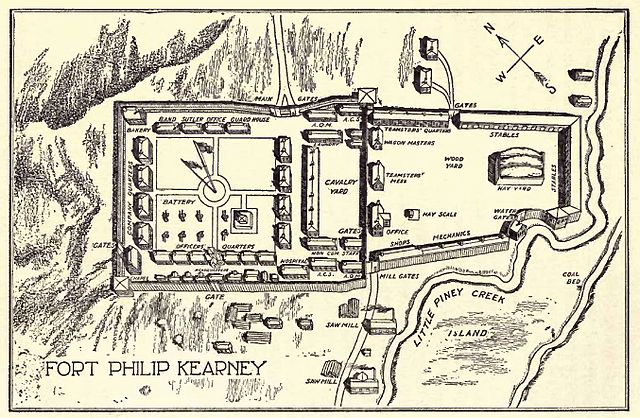William Judd Fetterman was an officer in the United States Army during the American Civil War and the subsequent Red Cloud's War on the Great Plains. Fetterman and his command of 80 men were killed in the Fetterman Fight.
Capt. William J. Fetterman
William J. Fetterman's Headstone, Little Bighorn National Cemetery
Plaque at Fetterman Battle site
Red Cloud's War was an armed conflict between an alliance of the Lakota, Northern Cheyenne, and Northern Arapaho peoples against the United States and the Crow Nation that took place in the Wyoming and Montana territories from 1866 to 1868. The war was fought over control of the western Powder River Country in present north-central Wyoming.
Lakota Sioux chiefs. Red Cloud is seated, second from left. Young Man Afraid of His Horses is standing, second from left. It was hard for the United States to start negotiations with any of these Lakotas, since they did not hold the treaty right to the contested Powder River ground. The Crows did that.
Fort Phil Kearny was constructed to house 1,000 soldiers, a number never achieved in its brief history. Similar to Fort Reno and Fort C. F. Smith it was built in Crow treaty land and accepted by these Indians.
The battle near Fort Philip Kearney, Dakota Territory, December 21, 1866. The battle stood outside the 1851 treaty territory of the Lakotas. These Indian newcomers won the western Powder River hunting grounds for themselves by displacing the local Crows at first. Secondly, they defeated the white soldiers on the very same plains in fights as the one pictured here.
Massacre Hill, looking northeast from Fetterman Monument. The Arapaho and Cheyenne were concealed to the left (west) of the foot trail in this photo; the Lakota to the right (east).







